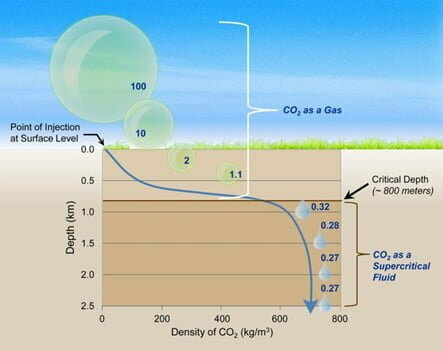The largest port in the U.S. received $16.4 million from the DOE as part of its CarbonSAFE initiative to evaluate the feasibility of permanently storing captured carbon dioxide (CO2) from industrial operations. The Port of Corpus Christi is a leader among U.S. energy export ports and brands itself as “Moving America’s Energy.”
Located on the Gulf of Mexico and protected by an expanding 36-mile channel, the port continues to grow as the top port for total revenue tonnage. Growth is due to liquefied natural gas (LNG) exports, refined product exports, and crude oil shipments. Global Trade reports that crude oil exports at the port grew from 1.39 million barrels per day in the first four months of 2020 to 1.85 million barrels per day during that same period in 2022. The port also set a new record for revenues in 2022 at $57.4 million after a rapid 19% increase from the year before.
If found to be feasible, carbon storage at this colossal industrial facility could make a deep impact in preventing CO2 pollution from entering the atmosphere.
The National Energy Technology Laboratory defines carbon capture and storage (CCS) as the separation and capture of CO2 from the emissions of industrial processes prior to release into the atmosphere. The CO2 is then stored underground in different formations, which the DOE is currently researching.
 (Photo: Carbon storage diagram showing CO2 injection into a saline formation while producing brine for beneficial use. Credit: National Energy Technology Laboratory.)
(Photo: Carbon storage diagram showing CO2 injection into a saline formation while producing brine for beneficial use. Credit: National Energy Technology Laboratory.)When announcing the DOE’s $130 million investment in carbon management technology, the U.S. Secretary of Energy Jennifer M. Granholm stated, “By deploying tools to capture, remove, and store CO2 emissions, we can dramatically reduce the air pollution harming our health and intensifying extreme weather events. The projects announced today will get us closer to achieving our climate goals while helping to revitalize local economies and deliver environmental benefits to communities too often left behind.”
Though the research in this space has long been underway, CCS development is a top priority for the U.S. after the Biden administration reentered the Paris Agreement in 2021. Nearly 200 nations committed to limiting greenhouse gas emissions to lower global warming. For context, the Mauna Loa Observatory in Hawaii reported that the earth’s CO2 levels increased 50% when compared to pre-industrial times.
The goal of the CarbonSAFE initiative is to fill in knowledge gaps in the research of CCS deployment, and it builds on the efforts of the Regional Carbon Sequestration Partnerships (RCSPs). The funding is divided into two grants which focus on the collection of geologic data in two places: onshore under Port-owned property, and under state-owned offshore tracts. Each of these projects aims to store at least 50 million metric tons of CO2 over a 30-year period. It should be noted that the funding is for the collection of data, and not the actual installation of such a project.
As the leading port for energy exports in the U.S., the Port of Corpus Christi cannot reduce carbon emissions at anywhere near the rate of its emissions, a consequence of its oil and gas transportation. However, it will be worth the investment if this research enables more progress toward increasing the efficiency of CCS technology.
The MIT Climate Portal notes that most projects only target 90% efficiency since that is how much CO2 a system must remove to be worth the investment to build and install it. Meeting climate targets such as the Paris Agreement with CCS technology will require significant improvements in efficiency over the coming years.